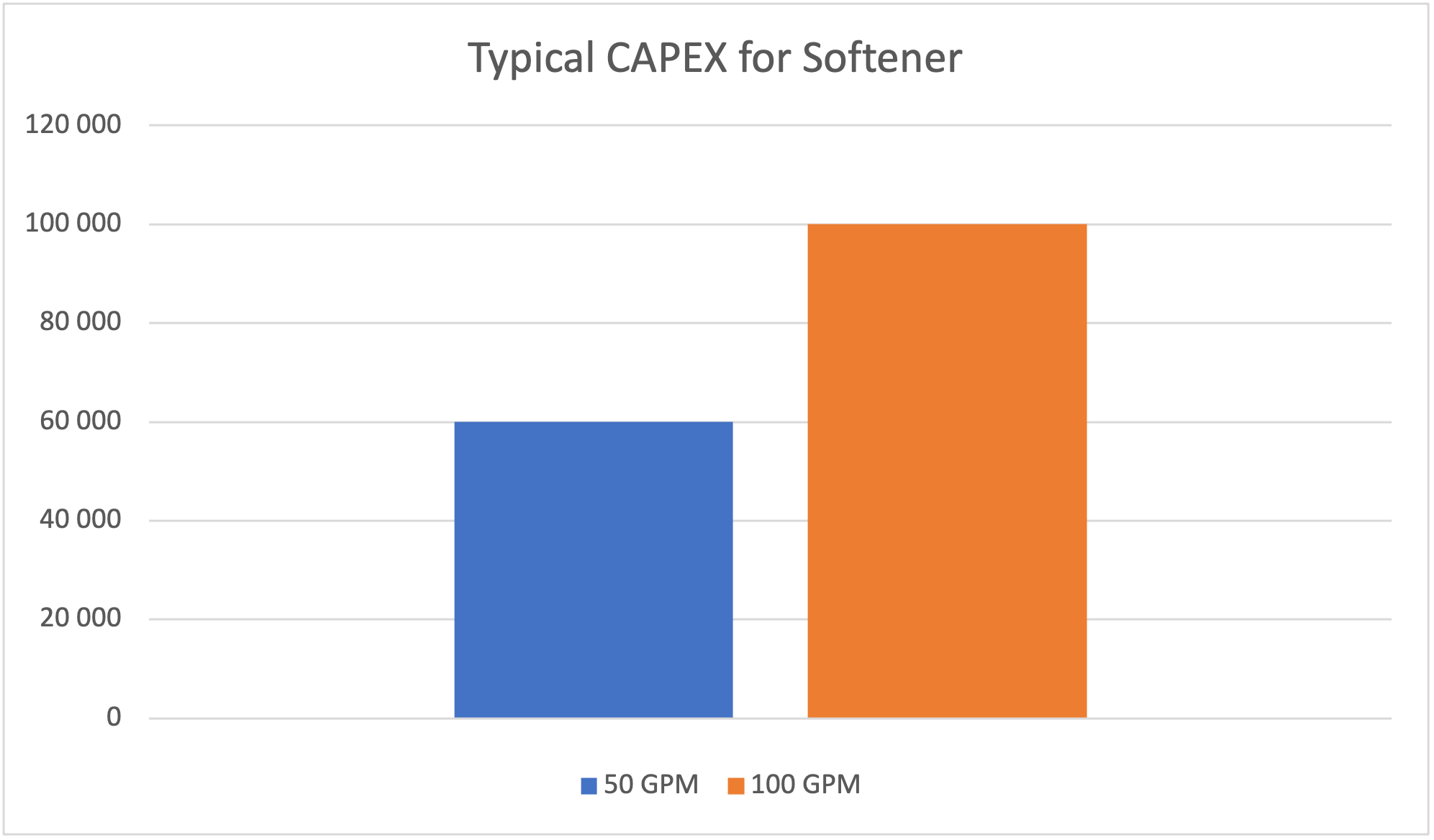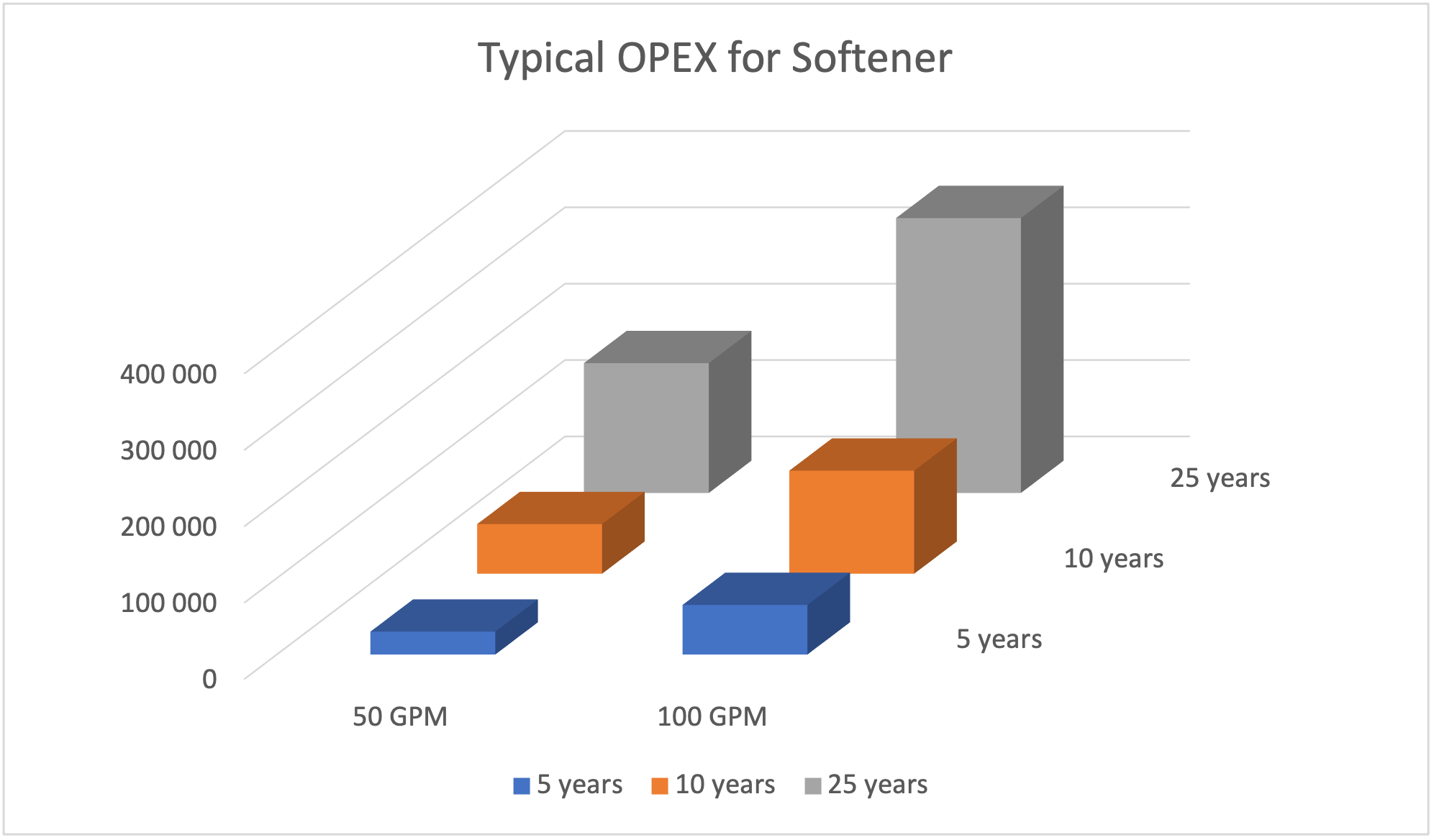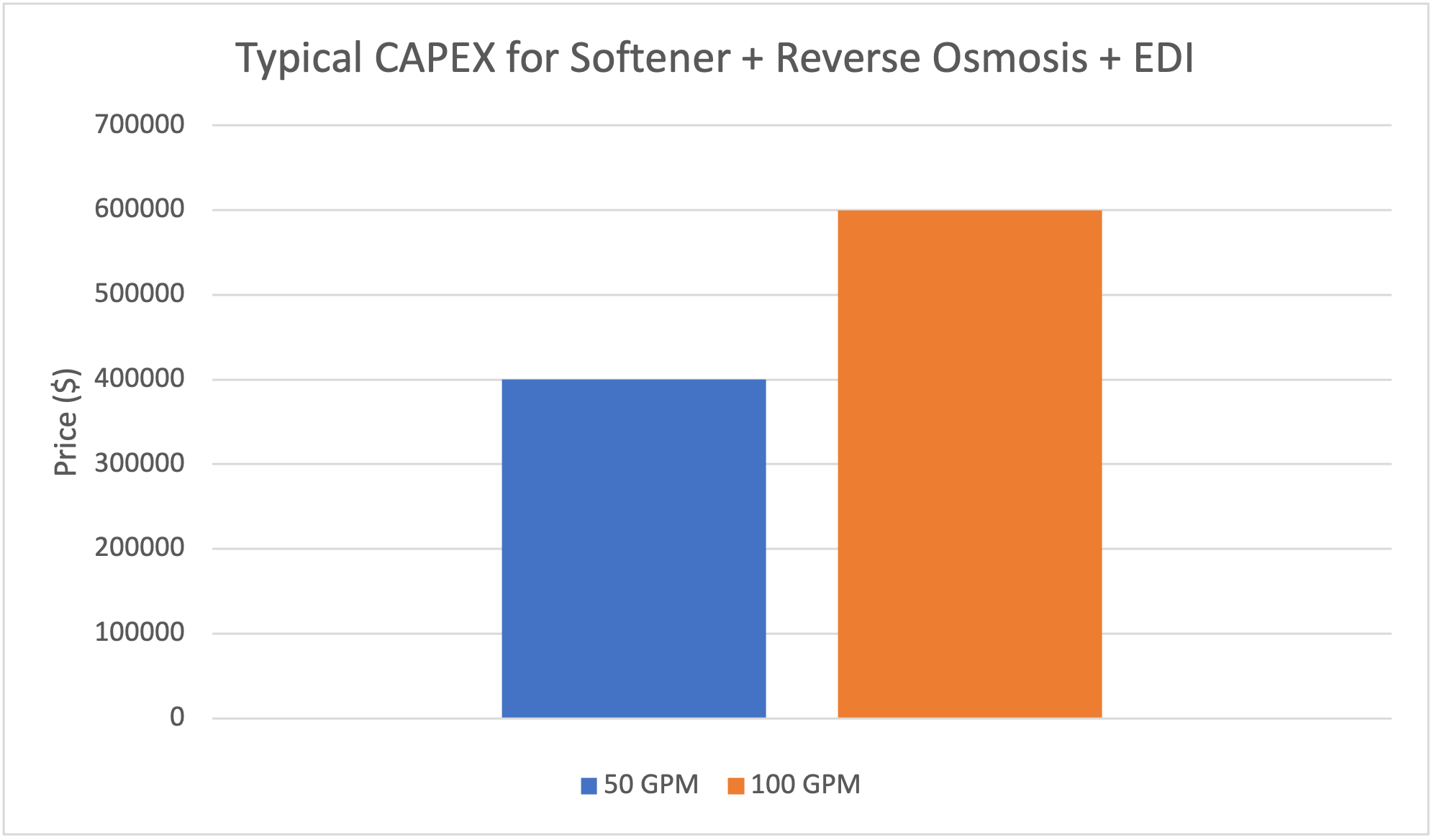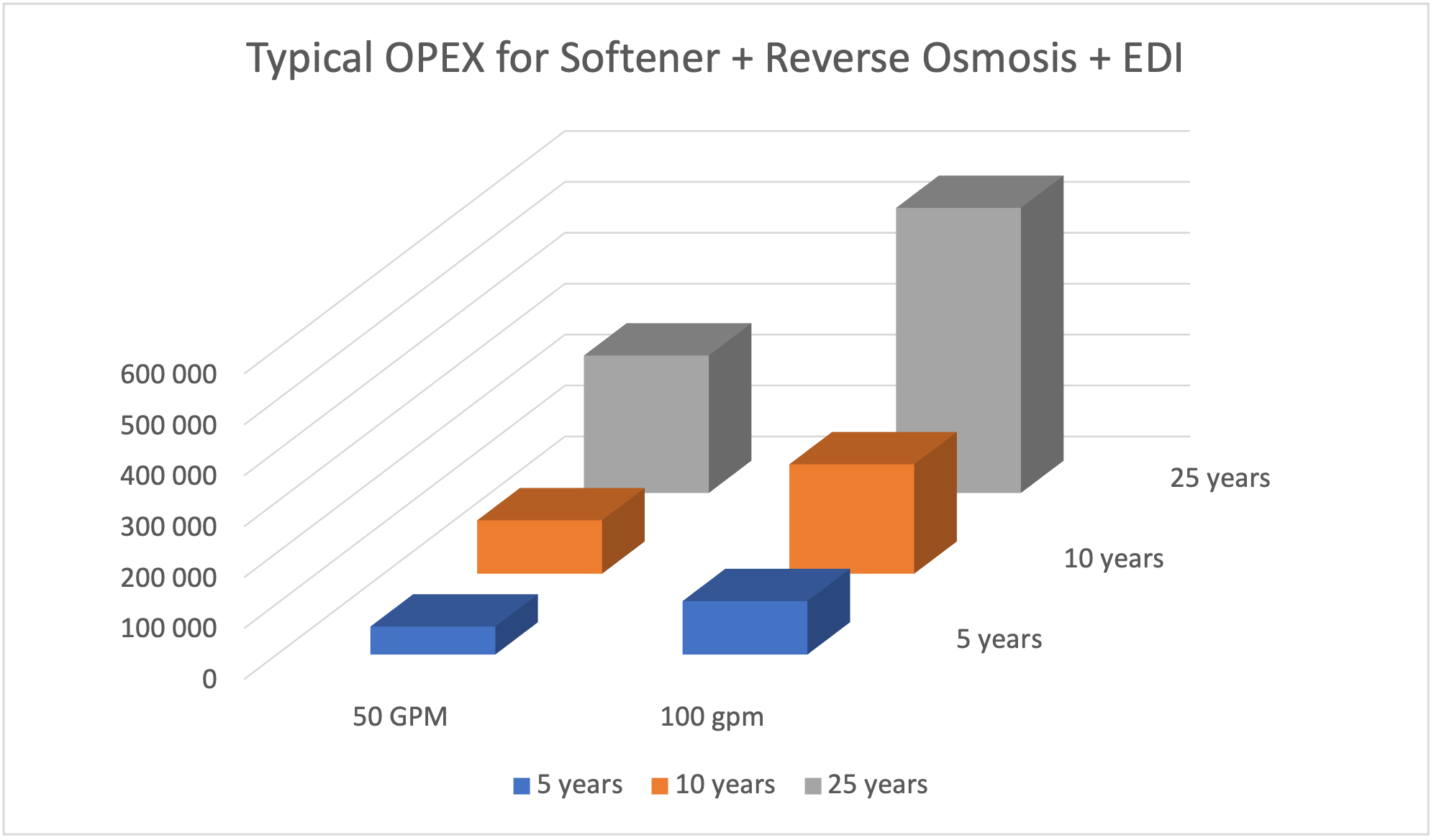The fact that boilers are present in various industries makes them an omnipresent challenge. This complex equipment has particular needs, especially regarding the water used inside them. To ensure the safe and stable use of this equipment, special water treatment systems are required. Without these systems, problems can occur, which is why the water treatment systems must be able to produce water of consistent quality.
What does a water treatment system for boiler supply mean?
Water treatment systems for industrial boiler supply are custom-built systems based on the specific needs of your facility. These systems must be able to consistently provide a quality water flow in which impurities hazardous to the boilers have been removed.
Whether they are used upstream of a low- or high-pressure boiler, these types of water treatment systems must have multiple capabilities to properly protect the equipment. These capabilities include controlling the internal chemistry of the tanks to prevent corrosion inside the boilers. Maximizing the reuse of steam condensate is also important to optimize the costs associated with the use of the system.
In addition to these capabilities, water treatment systems for boiler feed must control corrosion in the return line, avoid downtime due to boiler failure or equipment breakdown, and extend the life of the equipment.
What do water treatment systems for boiler supply have to ensure?
In general, such systems must be able to minimize scaling, corrosion, fouling and any kind of system failure. To do this, a certain water quality must be consistently achieved. Obviously, the components needed to achieve the desired objective will vary depending on the quality of the feed water. Indeed, if the water supply comes from a well that is heavily contaminated with iron, additional treatment steps may be required compared to a city’s water supply. Also, it should be remembered that the number of contaminants, or water quality, that can enter the boiler will vary depending on the pressure and temperature under which it is used.
In short, there are two main types of treatment for boiler water. The first is external treatment, which is used to reduce the amount of contaminants in the feed water if the concentrations are too high for the boiler. Among the external treatment technologies, we can think of different filtration technologies (microfiltration, ultrafiltration, nanofiltration), some ion exchangers or reverse osmosis. As for internal treatment, they are used to treat hardness in feed water, to condition sludge, to eliminate oxygen and to prevent foaming in boiler water. These two types of treatment can be used individually or together. Again, the use of one or both of these treatment techniques will depend on the quality of the incoming water to the plant, the temperature of the water and the operating pressure of the boiler or when the water used is a large quantity of steam.
As a general rule, it has been shown that a system operating at low pressure (40 kg/cm2 and below) does not require a polishing unit. For systems operating at medium pressure (40 kg/cm2 to 170 kg/cm2), the addition of a polishing unit can be avoided by controlling contamination in the feed water through intermittent and continuous purging of the boiler water. On the other hand, systems operating at high pressures (170 kg/cm2 and above) must have a polishing unit.
Generally speaking, the internal pressure of a boiler is proportional to its operating temperature. This means that a high-pressure boiler is also a high temperature boiler. For this reason, the quality of water to be achieved varies according to the internal pressure since the solvency of the contaminants changes in proportion to the temperature.
What problems may occur if the treatment is not effective
Depending on the contaminants to remain in the water when it is used in the boiler and the circumstances, the problems that can arise from improper water treatment range from scaling, corrosion, fouling and complete system failure.
As mentioned above, the quality of water required for your boiler changes depending on its operating pressure/temperature. We generally recommend relying on the manufacturer's manual to better understand the water treatment requirements for your equipment.
Scaling
Scale build-up can be caused by the presence of silica , magnesium, iron, aluminum, or calcium. It usually builds up inside the pipes of the system and can cause a variety of problems. When too much scale builds up, the internal pressure of the pipes and the flow rate of these pipes can be affected since the internal diameter is affected by a layer of accumulation.
Secondly, scaling can cause the system to overheat as the scale build-up insulates the pipes and increases the internal heat build-up of the system.
Although there are exceptions, for the operation of a low-pressure boiler, the addition of a simple water softener system will generally remedy the scaling problems. For the protection of high-pressure boilers, more advanced technologies such as softeners, reverse osmosis, electrodeionization or some form of deionization system are required.
Corrosion
To begin with, corrosion of boilers will tend to start where the temperature is the highest since this facilitates the corrosion process. It is usually due to dissolved oxygen and carbon dioxide in the water that corrosion occurs. An overly corroded system will show weaknesses in many areas and may eventually fail due to leaks.
Since corrosion can be caused by more than just dissolved oxygen or carbon dioxide, the techniques for reducing the risk of corrosion are complicated and varied. With respect to dissolved oxygen, the addition of chemicals such as nitrogen can reduce it, but other alternatives can also reduce this parameter.
Foam Formation
The accumulation of foam inside boilers is problematic because foam is an indicator of the presence of dissolved solids in the water. When a boiler is used to supply equipment such as turbines, the presence of foam, ergo dissolved solids, can be a problem since these dissolved solids can accumulate on the walls of the turbines and cause them to slow down and even risk major breakdown.
To prevent foaming in a boiler, it is important to monitor the alkalinity . Ideally, the pH should be maintained at a level of about 8.5 to 9.5.
What is the estimated CAPEX and OPEX of a boiler water treatment system?
The first step in estimating the cost of a water treatment system is to define a field of comparison. Since there are an infinite number of situations that can affect the price of a water treatment system , it is impossible for us to give an exact price for your situation. However, to give you an idea, we will compare two hypothetical situations.
Please note that these estimates are constructed without taking into account all the features you may face. They may not accurately represent the costs associated with your condition.
Situation 1 : Bouilloire basse pression
In this situation, the water sent to the boiler comes from the city's water system. Since the water is already treated and the boiler operates at low pressure, the simple addition of a softener system is sufficient to ensure proper treatment. In the following diagrams, you will find information about two water softener systems. The only difference between these two systems is the flow rate. The first one offers a flow rate of 50 gpm while the second one offers 100 gpm.


- 50 GPM: based on a hardness of 10 grains and a regeneration every 8 hours
- 100 GPM: based on a hardness of 10 grains and a regeneration every 16 hours
Situation 2 : Bouilloire haute pression
Again, the water supply for the treatment system comes from the city's network. The water treatment system, on the other hand, supplies a high-pressure boiler. To produce properly treated water for a high-pressure boiler, this treatment system will be in several stages. The treatment stages will be as follows:
- Softeners;
- Reverse Osmosis;
- Electrodeionization.
Below you will find two graphs showing the approximate acquisition and operation costs for this type of system.

 As stated, these estimates are intended to give an idea of the costs associated with the acquisition and use of a water treatment system for an industrial boiler.
As stated, these estimates are intended to give an idea of the costs associated with the acquisition and use of a water treatment system for an industrial boiler.
Conclusion
As you know, water treatment systems for industrial boilers are of the utmost importance for their proper operation. Since the types of treatment required vary depending on several factors (contaminants to be extracted, water input, type of boiler, etc.), it is important to be well informed before selecting any technology.
Adopting the right water treatment system not only protects the boiler from corrosion, scale and other problems that may occur, but also ensures that the water is treated properly. In fact, the right water treatment system ensures a safe environment for operators and optimizes investments by reducing unnecessary risks and maximizing vapor reuse.
Finally, we hope that this information has helped you make the right choice for your industrial boiler water treatment system. If you have any questions or problems, do not hesitate to write to us and we will be happy to assist you in your choice.